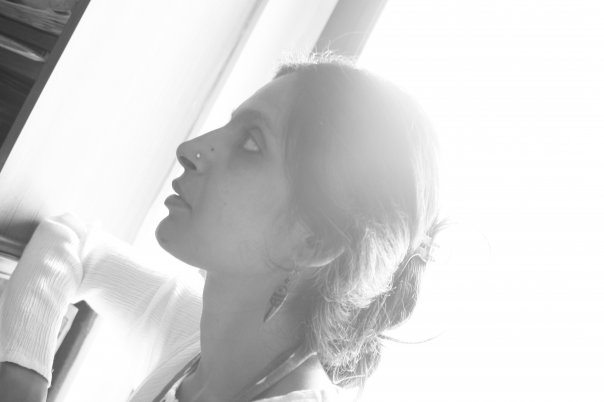
She reminds me of Umrao because she really was. The young Umrao in Muzaffar Ali’s 1981 classic film, I mean. Years later I met her as an artist in her own right, not just as the daughter of MS Sathyu and writer Shama Zaidi.
**
Recently, I met her again at the Sathyu home that is replete with the rich cultural life of her family and the secular values they live immersed in, as a matter of course. It is a warm home with sprawling, comfortable seaters, eclectic art on the walls, terracotta lamps and quaint collectibles. Nothing screams of achievement..just of contentment. Under a stairway, MS Sathyu’s Garam Hawa Filmfare trophy gathers dust and this is where Seema’s artistic paraphernalia is tucked away too. It is here, surrounded by music and ideas, that she paints.

Her present series that she will show shortly in Baroda and in Delhi is a poem imagined, illustrated and fleshed out not just with lines and colours but taranas, khayals, Sufiayana poetry, calligraphy, musical notes and India’s Ganga Jamuni tehzeeb that Seema has inherited from her father and mother. Her work sings, sighs, prays, meditates, dances, unravels like a mystery, unspools like a silken thread or a dream, finding its way through doorways, Mughal arches, endless staircases..strewing petals, and songs in its wake.
**
Her work engages the gaze and the spirit, provokes touch and thought much like Amir Khusrau’s poetry which has inspired a large part of the current series. These works are compact, intensely detailed, lush like fruit gardens where everything blossoms and tropical forests where birds fly unfettered. Seema says, “The idea was to engage with smaller spaces and say more. To find connections between poetry and music, even architecture, body and soul and the physical world.” Many of her works blur the line between a protagonist and her surroundings as she and the earth begin and end each other. The earth becomes her drapery and sometimes the five elements are within her and around her and she is one with them. At times, you don’t see the body and just a cloak of a mendicant or a fakir ka choga as Seema puts it.
**
The soul in her works travels constantly and walks through fires and soaks itself in cool blue waters. Sometimes the soul is the solitary wanderer, sometimes the soul is the path, sometimes a spiral into infinity. There are mudras and footprints, saying what words cannot. In her works, there is the obvious and the subtle. Surfaces and layers. Ripples of cosmic energy and placid calm. Puzzling interlocking patterns and complete harmony of form, idea, thought, line and colour.
**
There is the will to fly, to soar and the desire to dig deep into the earth to root oneself even more firmly. There is the human love for the temporal and the transcendent love in search of a ‘piya‘ who will quench the soul’s thirst forever.
**
Using aquarelle pencils, inks and pens, Seema has created intimate worlds within worlds that beckon you to not just lose yourself but to find what lies beyond the self.
**